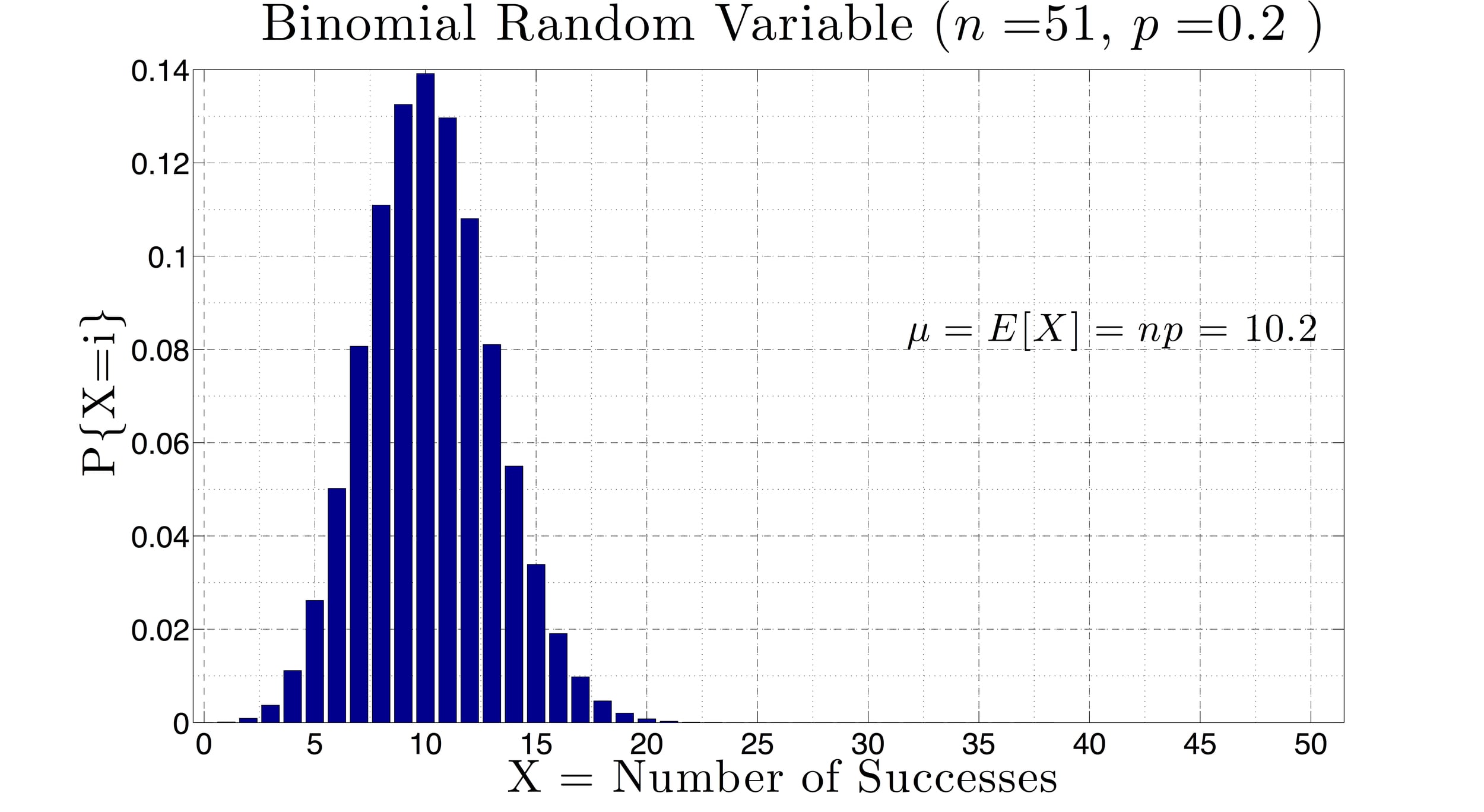
MATH 305 -- Probability
This course is an upper level math class focusing on discrete and continuous probability, combinatorial analysis, random variables, random vectors, density and distribution functions, moment generating functions, and particular probability distributions including the binomial, hyper-geometric, gamma, and normal. The weak and strong law of large numbers is discussed and the proof of the Central Limit Theorem is covered. The figure to the left illustrates the Central Limit Theorem.

MATH 254 -- Mathematical Modeling II
This course is designed as a companion course to MATH 252, with an alternate set of topics that emphasize mathematical applications from the social sciences, especially economics. In this course, we analyze and simulate discrete, continuous, and stochastic models that relate to economics and finance. Basic fixed/equilibrium point analyses are covered for single equations and systems. An emphasis on numerical simulation is also covered using MATLAB. The figure to the left shows a bivariate histogram for two best fit parameters of a continuous Allee-Effect model.


MATH 231 -- Calculus III
A typical multivariate calculus course covering vector-valued functions; partial derivatives; double and triple integrals; line and surface integrals of scalar functions and vector fields; polar, cylindrical, and spherical coordinate systems; and Green's Theorem, Stokes' Theorem, and the Divergence Theorem. The figure to the left shows the contour plot of a smooth surface with the gradient vector field overlaid. This shows how the gradient is perpendicular to level curves of the surface.

MATH 228 -- Linear Algebra
MATH 228 is a proof-based course in linear algebra, covering systems of linear equations, matrices, determinants, finite dimensional vector spaces, and linear transformations. The least-squares problem and eigenvalues/eigenvectors are typically covered towards the end of the class. Although there is a computational component to the class, a stronger focus is put on developing well written proofs, which may include the properties of matrix algebra, set containment, linear independence, and properties of vector spaces and subspaces. The figure to the left shows the intersection of three planes in three dimensional space, i.e. a 3x3 linear system with a unique solution.

MATH 210 -- Scientific Computing in MATLAB
This course is a computational workshop designed to introduce the student to Matlab, a powerful scientific computing software package. The workshop will focus on visual learning based on graphical displays of scientific data and simulation results from a variety of mathematical subject areas, such as calculus, differential equations, statistics, linear algebra, and numerical analysis. No prior computer language skills are required as basic programming tools such as loops, conditional operators, and debugging techniques will be developed as needed. The workshop prepares the student for future courses in applied mathematics as well as courses in other disciplines where scientific computing is essential. The figure to the left is a fractal map called the Julia set generated by Matlab with additional lighting/smoothing features enabled. Figure credit goes to Mariam Avagyan.

MATH 207 -- Statistical Data Analysis
This class is an introductory course to modern statistical techniques that moves more quickly than its MATH 107 counterpart. Techniques of data analysis are explored including graphical methods, random variables, discrete and continuous probability models, regression analysis, sampling distributions for sample proportions and means, and inference for one and two population proportions and means. The figure to the left shows the binomial probability distribution.

MATH 132 -- Calculus II
A typical calculus II course for students in the natural sciences that focuses primarily on the Riemann integral and its applications, techniques of integration, first-order ordinary differential equations, and infinite sequences and series. The figure to the left shows the infinite area under a discontinuous function.

MATH 131 -- Calculus I
This course is a typical first calculus class designed for mathematics, natural science, and computer science majors. The course introduces important functions and graphs, the concept of limits and continuity, derivatives and their applications, and anti-derivatives with a brief introduction to the fundamental theorem of calculus. The figure to the left demonstrates Newton's Method for approximating roots of functions.

MATH 107 -- Elements of Statistics
This course is a light introduction to statistical methods primarily for students in the social and natural sciences. The course typically covers the general measures of central tendency and dispersion, graphical displays of categorical and quantitative data, basic probability, random variables, sampling distributions, and inference for one and two population means. The figure to the left demonstrates the law of large numbers by keeping track of the proportion of heads that are flipped over a trial of 100 coin flips.









